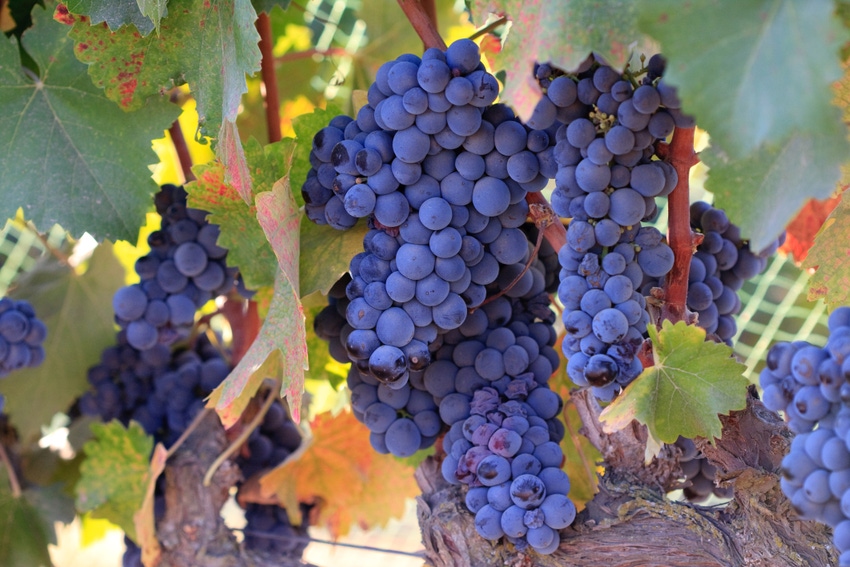
With Livermore Valley grower Matt Boughner’s harvest past the half way mark in early October, yields were coming in at average to a little above for all but two of his varieties.
One of those is Syrah. The Alameda County grower estimates production in those fields is about 40 percent under typical levels. That’s worse than last year, when yields fell 20 percent to 25 percent below average.
“Syrah seems to be the one variety in which yields have been down this year for a lot of growers in this area,” Boughner says.
And, for the second year in a row, production of his Cabernet Sauvignon vines is also off. They’re about 25 percent under average. Last year, production dropped even more – to about 40 percent below average.
He attributes the drop in Cabernet Sauvignon yields this year to cool weather in May that disrupted the fruit set, causing shatter and leading to smaller clusters and berries.
“Shatter wasn’t a problem in the Syrah,” Boughner says. “But those vines produced a lot of sterile shoots. The vines looked green and healthy, but they didn’t have many clusters. I’d love to know why.”
He’s been growing wine grapes since 2008. Including his and his clients’ vineyards, Boughner’s company, MGB Ag Consulting, manages about 800 acres of grapes in the area around Livermore, Calif. In addition to Cabernet Sauvignon and Syrah, he grows Chardonnay, Merlot, Petite Syrah and Viognier along with a number of others.
Boughner began this year’s harvest on Sept. 6, about a week later than normal. He expects to finish around Nov. 1.
He’s been pleased with the quality of all the fruit he’s picked so far. “The weather this summer was nice and warm, and the wineries are happy with the crop,” he says. “With its lighter crop load, the quality of the Syrah has been especially good.”
Boughner’s fields are drip-irrigated with water from the Central Valley Project’s Zone 7 Irrigation District. They received their full allocation of water. Last year, deliveries were limited to 75 percent, he reports.
Pressure from insect pests, mainly from leaf hoppers and mites, was normal this season. However, with dustier conditions during the past several years of drought, mite numbers have increased.
One fungal disease proved to be Boughner’s biggest IPM challenge in 2016. “It hasn’t been a problem the last few seasons, but this was definitely a powdery mildew year, especially in the Chardonnay,” he says. “We had a number of rains and foggy mornings in late spring, which left the vineyards wet and damp. Then, that was followed by cooler weather.”
He kept the disease under control using his regular program. He treats the vines with either wettable sulfur or sulfur dust as needed until June 1. Then, to minimize any sulfur residue on the berries, he switches to applying various systemic fungicides until veraison when the powdery mildew risk subsides.
Meanwhile, the problem of finding enough workers to harvest the grapes continues to worsen for Boughner and other growers in his area.
“This year it’s been tough,” he says. “There’s too much demand for the supply as workers look elsewhere for less-demanding work.”
To deal with the increasing labor shortage, Boughner purchased a special harvester last year. It features a premium sorting system that de-stems the fruit and delivers whole berries with very little material other than grapes (MOG). He uses it to harvest about 60 percent of his grapes.
To pick the rest of the grapes by hand at the optimal he’s had to schedule crews as much as ten to 14 days in advance of when the fruit has reached the desired maturity.
“A number of smaller wineries are coming to accept the reality of the lack of labor to harvest the crop in a timely manner and are agreeing to have their crop machine-picked,” he says. “Knowing I may not be able to pick their crop by hand for another 10 days, but I can be there tomorrow with my machine to pick, really helps them in deciding which way to go.”
About the Author(s)
You May Also Like




